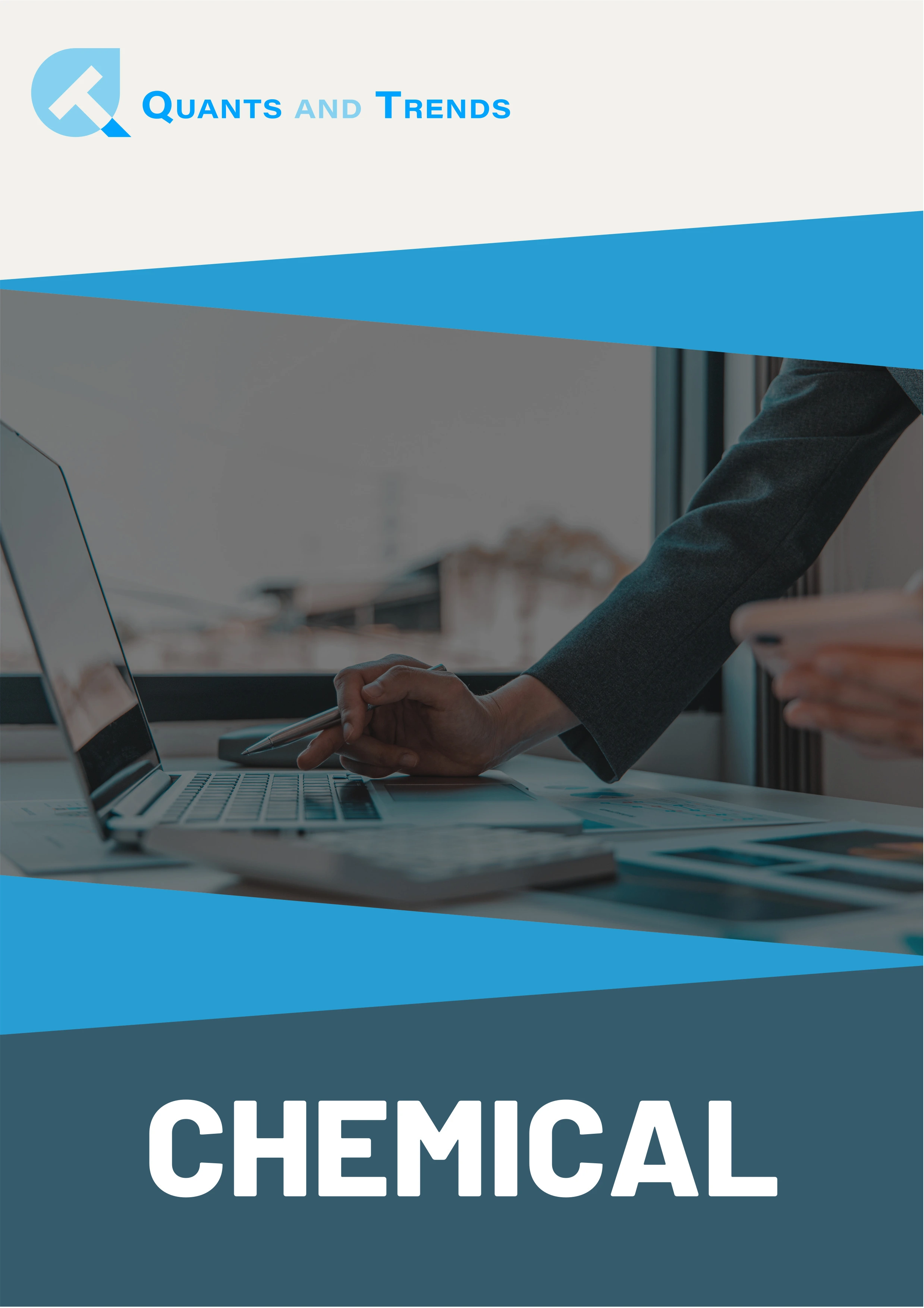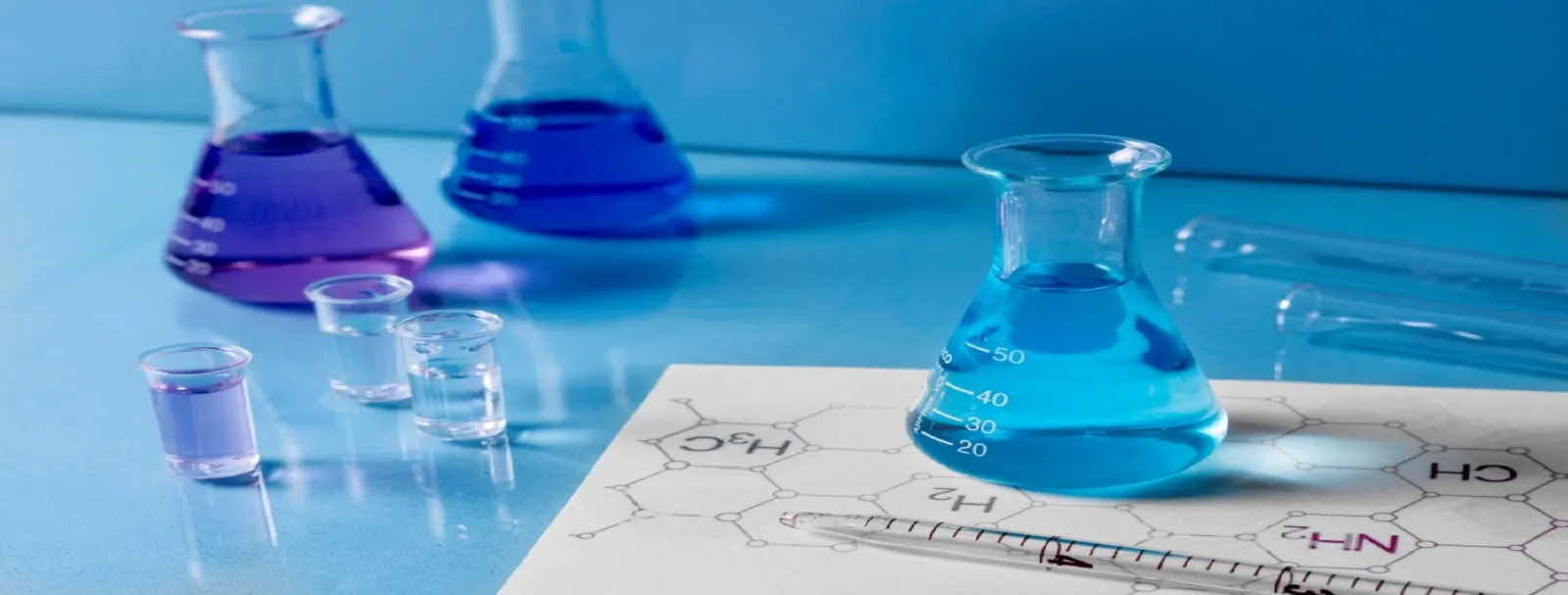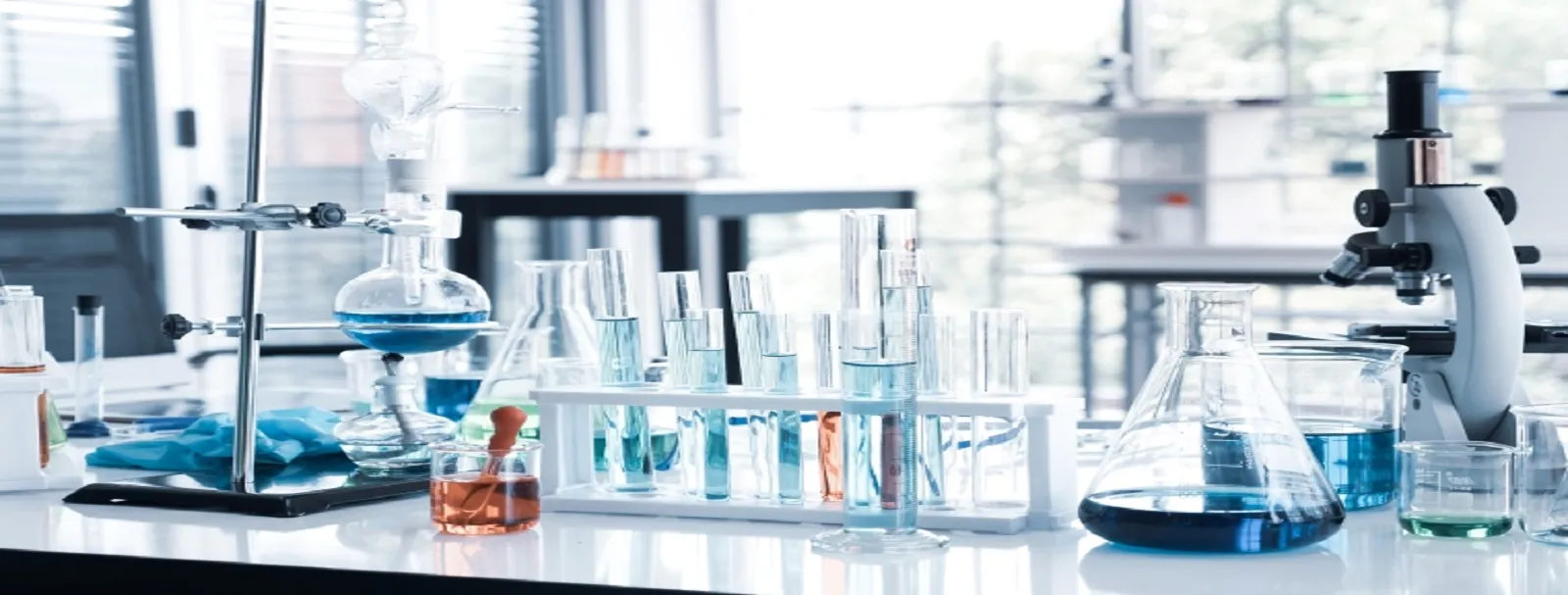Market Outlook
The global Rubber Antioxidant Market size was valued at USD 1799.7 million in 2022 and is forecast to a readjusted size of USD 2082.3 million by 2029 with a CAGR of 2.1% during review period.
Introduction: Why the Rubber Antioxidant Market Matters in 2025
The Rubber Antioxidant Market is vital in the rubber industry to prevent degradation caused by heat, oxygen, and ozone exposure. Antioxidants enhance the durability and longevity of rubber products used in automotive, industrial, and consumer goods.
Market Drivers: What's Fueling the Rubber Antioxidant Demand?
Automotive Industry Growth: Increasing vehicle production requires durable rubber components.
Industrial Applications: Rising demand for machinery and equipment necessitates high-quality rubber parts.
Consumer Goods Expansion: Growth in electronics and household products drives the need for durable rubber materials.
Innovation in Focus: How Rubber Antioxidant Manufacturers Are Advancing
Advanced Formulations: Development of multifunctional antioxidants that offer enhanced protection and processing benefits.
Sustainable Alternatives: Exploration of bio-based and eco-friendly antioxidants to meet environmental regulations.
Regional Breakdown: Where Demand Is Shifting
Asia-Pacific: Leading the market due to rapid industrialization and automotive production.
North America: Steady demand driven by automotive and industrial sectors.
Europe: Growth influenced by stringent environmental regulations and technological advancements.
Strategic Considerations: How to Compete in 2025
Invest in R&D: Focus on developing advanced and sustainable antioxidant formulations.
Strengthen Partnerships: Collaborate with rubber manufacturers to tailor antioxidant solutions to specific applications.
Conclusion: The Rubber Antioxidant Market - Enhancing Durability and Performance
In 2025, the rubber antioxidant market is crucial for ensuring the longevity and performance of rubber products. Stakeholders can thrive by focusing on innovation and sustainability.
Key Market Players
Eastman
Kumho Petrochemical
Lanxess
Agrofert (Duslo)
NOCIL
OUCHI SHINKO CHEMICAL
DYNASOL (GENERAL QUIMICA)
Sennics
XiangYu-Chem
Kemai Chemical
Sunsine
NCIC
Segmentation By Type
PPDs
RD (TMQ)
Others
Segmentation By Application
Tires
Automotive Rubber Products
Others
Segmentation By Region
North America (United States, Canada and Mexico)
Europe (Germany, France, United Kingdom, Russia, Italy, and Rest of Europe)
Asia-Pacific (China, Japan, Korea, India, Southeast Asia, and Australia)
South America (Brazil, Argentina, Colombia, and Rest of South America)
Middle East & Africa (Saudi Arabia, UAE, Egypt, South Africa, and Rest of Middle East & Africa)
Market SWOT Analysis
What are the strengths of the Rubber Antioxidant Market in 2025?
Rubber antioxidants play a critical role in extending the lifespan of rubber products by preventing oxidative degradation, ensuring steady demand from the automotive, construction, and industrial sectors.
What are the weaknesses of the Rubber Antioxidant Market in 2025?
The environmental impact of certain rubber antioxidants, along with increasing regulatory restrictions on chemicals, could limit their widespread adoption and increase production costs.
What are the opportunities for the Rubber Antioxidant Market in 2025?
With increasing demand for durable and high-performance rubber products in industries like automotive and consumer goods, the market for rubber antioxidants is expected to expand.
What are the threats to the Rubber Antioxidant Market in 2025?
The development of more eco-friendly or biodegradable alternatives and the rise of sustainable manufacturing practices could pose challenges to the rubber antioxidant market.
Market PESTEL Analysis
How do political factors impact the Rubber Antioxidant Market in 2025?
Government regulations on the chemical composition of rubber products, particularly in industries like automotive and manufacturing, influence the demand for rubber antioxidants, which are used to prevent degradation in rubber materials.
What economic factors affect the Rubber Antioxidant Market in 2025?
Economic growth in the automotive, tire manufacturing, and industrial sectors directly impacts the demand for rubber antioxidants, as these industries rely on high-performance rubber products that require protection from aging and oxidation.
How do social factors shape the Rubber Antioxidant Market in 2025?
The increasing emphasis on sustainability and the growing use of eco-friendly materials in industrial products are driving the demand for non-toxic, biodegradable rubber antioxidants, influencing market trends in rubber processing.
What technological factors are relevant to the Rubber Antioxidant Market in 2025?
Advancements in rubber chemistry and the development of more efficient, long-lasting antioxidants are enhancing the durability and performance of rubber products, increasing the demand for innovative antioxidant solutions in various industrial applications.
What environmental factors influence the Rubber Antioxidant Market in 2025?
Environmental concerns regarding the use of hazardous chemicals in industrial processes are pushing for the development and use of safer, greener rubber antioxidants that do not compromise product performance or environmental safety.
How do legal factors impact the Rubber Antioxidant Market in 2025?
Regulations governing the use of chemicals in rubber products, particularly in the automotive and industrial sectors, ensure that rubber antioxidants meet safety standards, which can impact the types of antioxidants used and their market availability.
Market SIPOC Analysis
Who are the suppliers in the Rubber Antioxidant Market 2025?
Suppliers include chemical manufacturers producing rubber antioxidants, companies specializing in polymer additives, and firms that supply materials for automotive and industrial rubber applications.
What are the inputs in the Rubber Antioxidant Market 2025?
Inputs include chemical compounds such as amines, phenols, and phosphates, which are used to produce rubber antioxidants that protect rubber products from degradation due to heat, light, and oxygen.
What processes are involved in the Rubber Antioxidant Market 2025?
Processes include the synthesis of rubber antioxidants, followed by blending them into rubber compounds during the manufacturing of tires, seals, and industrial rubber products.
Who are the customers in the Rubber Antioxidant Market 2025?
Customers include tire manufacturers, automotive suppliers, and industries producing rubber goods, such as seals, gaskets, and conveyor belts, that require enhanced durability and longevity.
What are the outcomes in the Rubber Antioxidant Market 2025?
Outcomes include growing demand for rubber antioxidants due to the need for longer-lasting rubber products in automotive, industrial, and consumer goods sectors.
Market Porter's Five Forces
What is the threat of new entrants in the Rubber Antioxidant Market in 2025?
The threat of new entrants is moderate. Although rubber antioxidant production does not require extremely high capital investment, the expertise required in chemical formulations and regulatory compliance for automotive and industrial applications creates some barriers.
What is the bargaining power of suppliers in the Rubber Antioxidant Market in 2025?
The bargaining power of suppliers is moderate. While there are several suppliers of the basic chemicals required for rubber antioxidants, the need for high-quality, reliable performance in demanding applications gives some suppliers a degree of control.
What is the bargaining power of buyers in the Rubber Antioxidant Market in 2025?
The bargaining power of buyers is moderate. Buyers in industries like automotive and manufacturing can choose from multiple suppliers, but the importance of product performance and longevity in rubber goods limits their ability to negotiate heavily on price.
What is the threat of substitute products in the Rubber Antioxidant Market in 2025?
The threat of substitutes is low. Rubber antioxidants serve a specific purpose in preventing degradation of rubber materials, and while other chemical additives can be used, they cannot replicate the same protective effects as rubber antioxidants.
What is the intensity of competitive rivalry in the Rubber Antioxidant Market in 2025?
The intensity of competitive rivalry is moderate. The rubber antioxidant market has several established players, but the growing demand for high-performance materials in automotive and industrial sectors leads to competitive innovation and product differentiation.
Market Upstream Analysis
What are the key raw materials in the Rubber Antioxidant Market in 2025?
Key raw materials include chemicals such as amines, phenols, and thiols, which are used in the production of rubber antioxidants, essential for extending the lifespan of rubber products by preventing oxidation and degradation.
What role do suppliers play in the Rubber Antioxidant Market in 2025?
Suppliers provide high-quality chemical intermediates and antioxidant compounds that help manufacturers produce rubber products with improved durability, heat resistance, and stability for use in automotive, industrial, and consumer applications.
How does the regulatory environment affect upstream factors in this market?
Regulations on chemical safety, environmental impact, and material performance standards influence the production and use of rubber antioxidants, pushing suppliers to develop safer, more sustainable compounds while meeting performance specifications.
What technological advancements influence upstream production in the Rubber Antioxidant Market in 2025?
Technological advancements in synthetic chemistry and material formulation are enabling the development of more efficient, long-lasting rubber antioxidants with improved heat resistance, lower toxicity, and reduced environmental impact.
What challenges do upstream suppliers face in this market?
Suppliers face challenges in ensuring the consistency and quality of rubber antioxidants, managing raw material costs, and meeting increasing demand for eco-friendly products in response to growing environmental concerns.
Market Midstream Analysis
What are the key processes involved in the midstream of the Rubber Antioxidant Market in 2025?
The key processes involve the synthesis of rubber antioxidants, followed by formulation, packaging, and distribution for use in the rubber manufacturing industry to prevent degradation and extend the lifespan of rubber products.
How do manufacturers contribute to the Rubber Antioxidant Market in 2025?
Manufacturers focus on developing more effective and environmentally friendly rubber antioxidants that protect rubber products from oxidation, heat, and environmental factors, thus improving their performance and longevity.
What is the role of packaging in the midstream of this market?
Packaging ensures that rubber antioxidants remain stable and free from contamination during transportation, maintaining their chemical integrity and effectiveness when used in rubber manufacturing processes.
What challenges do companies face in the midstream of this market?
Challenges include ensuring the consistent performance of antioxidants in diverse rubber formulations, managing the environmental impact of chemical additives, and responding to growing demand for more sustainable and non-toxic alternatives.
How do distribution channels affect the Rubber Antioxidant Market in 2025?
Distribution channels are vital to ensure that rubber manufacturers receive timely shipments of antioxidants, enabling them to produce high-quality rubber products used in automotive, construction, and industrial applications.
Market Downstream Analysis
What are the key consumer segments in the Rubber Antioxidant Market in 2025?
Key consumers include the automotive industry for tire manufacturing, the manufacturing industry for rubber products, and the industrial sector for equipment requiring rubber components with enhanced durability.
What role do distributors and suppliers play in the Rubber Antioxidant Market in 2025?
Distributors and suppliers provide high-quality rubber antioxidants to manufacturers, ensuring reliable delivery and meeting the specific needs of various rubber-based applications while maintaining product quality standards.
What challenges do companies face in the downstream market of this industry?
Challenges include addressing the increasing demand for sustainable and non-toxic antioxidants, managing supply chain disruptions, and meeting growing regulatory requirements for chemical safety in rubber products.
How does consumer feedback influence the Rubber Antioxidant Market in 2025?
Consumer feedback influences manufacturers to innovate safer and more sustainable antioxidant solutions, leading to the development of non-toxic, eco-friendly alternatives that provide the same or enhanced performance in rubber applications.
Chapter 1, to describe Rubber Antioxidant product scope, market overview, market estimation caveats and base year.
Chapter 2, to profile the top manufacturers of Rubber Antioxidant, with price, sales, revenue and global market share of Rubber Antioxidant from 2018 to 2023.
Chapter 3, the Rubber Antioxidant competitive situation, sales quantity, revenue and global market share of top manufacturers are analyzed emphatically by landscape contrast.
Chapter 4, the Rubber Antioxidant breakdown data are shown at the regional level, to show the sales quantity, consumption value and growth by regions, from 2018 to 2029.
Chapter 5 and 6, to segment the sales by Type and application, with sales market share and growth rate by type, application, from 2018 to 2029.
Chapter 7, 8, 9, 10 and 11, to break the sales data at the country level, with sales quantity, consumption value and market share for key countries in the world, from 2017 to 2022.and Rubber Antioxidant market forecast, by regions, type and application, with sales and revenue, from 2024 to 2029.
Chapter 12, market dynamics, drivers, restraints, trends, Porters Five Forces analysis, and Influence of COVID-19 and Russia-Ukraine War.
Chapter 13, the key raw materials and key suppliers, and industry chain of Rubber Antioxidant.
Chapter 14 and 15, to describe Rubber Antioxidant sales channel, distributors, customers, research findings and conclusion.
1 Market Overview
1.1 Product Overview and Scope of Rubber Antioxidant
1.2 Market Estimation Caveats and Base Year
1.3 Market Analysis by Type
1.3.1 Overview: Global Rubber Antioxidant Consumption Value by Type: 2018 Versus 2022 Versus 2029
1.3.2 PPDs
1.3.3 RD (TMQ)
1.3.4 Others
1.4 Market Analysis by Application
1.4.1 Overview: Global Rubber Antioxidant Consumption Value by Application: 2018 Versus 2022 Versus 2029
1.4.2 Tires
1.4.3 Automotive Rubber Products
1.4.4 Others
1.5 Global Rubber Antioxidant Market Size & Forecast
1.5.1 Global Rubber Antioxidant Consumption Value (2018 & 2022 & 2029)
1.5.2 Global Rubber Antioxidant Sales Quantity (2018-2029)
1.5.3 Global Rubber Antioxidant Average Price (2018-2029)
2 Manufacturers Profiles
2.1 Eastman
2.1.1 Eastman Details
2.1.2 Eastman Major Business
2.1.3 Eastman Rubber Antioxidant Product and Services
2.1.4 Eastman Rubber Antioxidant Sales Quantity, Average Price, Revenue, Gross Margin and Market Share (2018-2023)
2.1.5 Eastman Recent Developments/Updates
2.2 Kumho Petrochemical
2.2.1 Kumho Petrochemical Details
2.2.2 Kumho Petrochemical Major Business
2.2.3 Kumho Petrochemical Rubber Antioxidant Product and Services
2.2.4 Kumho Petrochemical Rubber Antioxidant Sales Quantity, Average Price, Revenue, Gross Margin and Market Share (2018-2023)
2.2.5 Kumho Petrochemical Recent Developments/Updates
2.3 Lanxess
2.3.1 Lanxess Details
2.3.2 Lanxess Major Business
2.3.3 Lanxess Rubber Antioxidant Product and Services
2.3.4 Lanxess Rubber Antioxidant Sales Quantity, Average Price, Revenue, Gross Margin and Market Share (2018-2023)
2.3.5 Lanxess Recent Developments/Updates
2.4 Agrofert (Duslo)
2.4.1 Agrofert (Duslo) Details
2.4.2 Agrofert (Duslo) Major Business
2.4.3 Agrofert (Duslo) Rubber Antioxidant Product and Services
2.4.4 Agrofert (Duslo) Rubber Antioxidant Sales Quantity, Average Price, Revenue, Gross Margin and Market Share (2018-2023)
2.4.5 Agrofert (Duslo) Recent Developments/Updates
2.5 NOCIL
2.5.1 NOCIL Details
2.5.2 NOCIL Major Business
2.5.3 NOCIL Rubber Antioxidant Product and Services
2.5.4 NOCIL Rubber Antioxidant Sales Quantity, Average Price, Revenue, Gross Margin and Market Share (2018-2023)
2.5.5 NOCIL Recent Developments/Updates
2.6 OUCHI SHINKO CHEMICAL
2.6.1 OUCHI SHINKO CHEMICAL Details
2.6.2 OUCHI SHINKO CHEMICAL Major Business
2.6.3 OUCHI SHINKO CHEMICAL Rubber Antioxidant Product and Services
2.6.4 OUCHI SHINKO CHEMICAL Rubber Antioxidant Sales Quantity, Average Price, Revenue, Gross Margin and Market Share (2018-2023)
2.6.5 OUCHI SHINKO CHEMICAL Recent Developments/Updates
2.7 DYNASOL (GENERAL QUIMICA)
2.7.1 DYNASOL (GENERAL QUIMICA) Details
2.7.2 DYNASOL (GENERAL QUIMICA) Major Business
2.7.3 DYNASOL (GENERAL QUIMICA) Rubber Antioxidant Product and Services
2.7.4 DYNASOL (GENERAL QUIMICA) Rubber Antioxidant Sales Quantity, Average Price, Revenue, Gross Margin and Market Share (2018-2023)
2.7.5 DYNASOL (GENERAL QUIMICA) Recent Developments/Updates
2.8 Sennics
2.8.1 Sennics Details
2.8.2 Sennics Major Business
2.8.3 Sennics Rubber Antioxidant Product and Services
2.8.4 Sennics Rubber Antioxidant Sales Quantity, Average Price, Revenue, Gross Margin and Market Share (2018-2023)
2.8.5 Sennics Recent Developments/Updates
2.9 XiangYu-Chem
2.9.1 XiangYu-Chem Details
2.9.2 XiangYu-Chem Major Business
2.9.3 XiangYu-Chem Rubber Antioxidant Product and Services
2.9.4 XiangYu-Chem Rubber Antioxidant Sales Quantity, Average Price, Revenue, Gross Margin and Market Share (2018-2023)
2.9.5 XiangYu-Chem Recent Developments/Updates
2.10 Kemai Chemical
2.10.1 Kemai Chemical Details
2.10.2 Kemai Chemical Major Business
2.10.3 Kemai Chemical Rubber Antioxidant Product and Services
2.10.4 Kemai Chemical Rubber Antioxidant Sales Quantity, Average Price, Revenue, Gross Margin and Market Share (2018-2023)
2.10.5 Kemai Chemical Recent Developments/Updates
2.11 Sunsine
2.11.1 Sunsine Details
2.11.2 Sunsine Major Business
2.11.3 Sunsine Rubber Antioxidant Product and Services
2.11.4 Sunsine Rubber Antioxidant Sales Quantity, Average Price, Revenue, Gross Margin and Market Share (2018-2023)
2.11.5 Sunsine Recent Developments/Updates
2.12 NCIC
2.12.1 NCIC Details
2.12.2 NCIC Major Business
2.12.3 NCIC Rubber Antioxidant Product and Services
2.12.4 NCIC Rubber Antioxidant Sales Quantity, Average Price, Revenue, Gross Margin and Market Share (2018-2023)
2.12.5 NCIC Recent Developments/Updates
3 Competitive Environment: Rubber Antioxidant by Manufacturer
3.1 Global Rubber Antioxidant Sales Quantity by Manufacturer (2018-2023)
3.2 Global Rubber Antioxidant Revenue by Manufacturer (2018-2023)
3.3 Global Rubber Antioxidant Average Price by Manufacturer (2018-2023)
3.4 Market Share Analysis (2022)
3.4.1 Producer Shipments of Rubber Antioxidant by Manufacturer Revenue ($MM) and Market Share (%): 2022
3.4.2 Top 3 Rubber Antioxidant Manufacturer Market Share in 2022
3.4.2 Top 6 Rubber Antioxidant Manufacturer Market Share in 2022
3.5 Rubber Antioxidant Market: Overall Company Footprint Analysis
3.5.1 Rubber Antioxidant Market: Region Footprint
3.5.2 Rubber Antioxidant Market: Company Product Type Footprint
3.5.3 Rubber Antioxidant Market: Company Product Application Footprint
3.6 New Market Entrants and Barriers to Market Entry
3.7 Mergers, Acquisition, Agreements, and Collaborations
4 Consumption Analysis by Region
4.1 Global Rubber Antioxidant Market Size by Region
4.1.1 Global Rubber Antioxidant Sales Quantity by Region (2018-2029)
4.1.2 Global Rubber Antioxidant Consumption Value by Region (2018-2029)
4.1.3 Global Rubber Antioxidant Average Price by Region (2018-2029)
4.2 North America Rubber Antioxidant Consumption Value (2018-2029)
4.3 Europe Rubber Antioxidant Consumption Value (2018-2029)
4.4 Asia-Pacific Rubber Antioxidant Consumption Value (2018-2029)
4.5 South America Rubber Antioxidant Consumption Value (2018-2029)
4.6 Middle East and Africa Rubber Antioxidant Consumption Value (2018-2029)
5 Market Segment by Type
5.1 Global Rubber Antioxidant Sales Quantity by Type (2018-2029)
5.2 Global Rubber Antioxidant Consumption Value by Type (2018-2029)
5.3 Global Rubber Antioxidant Average Price by Type (2018-2029)
6 Market Segment by Application
6.1 Global Rubber Antioxidant Sales Quantity by Application (2018-2029)
6.2 Global Rubber Antioxidant Consumption Value by Application (2018-2029)
6.3 Global Rubber Antioxidant Average Price by Application (2018-2029)
7 North America
7.1 North America Rubber Antioxidant Sales Quantity by Type (2018-2029)
7.2 North America Rubber Antioxidant Sales Quantity by Application (2018-2029)
7.3 North America Rubber Antioxidant Market Size by Country
7.3.1 North America Rubber Antioxidant Sales Quantity by Country (2018-2029)
7.3.2 North America Rubber Antioxidant Consumption Value by Country (2018-2029)
7.3.3 United States Market Size and Forecast (2018-2029)
7.3.4 Canada Market Size and Forecast (2018-2029)
7.3.5 Mexico Market Size and Forecast (2018-2029)
8 Europe
8.1 Europe Rubber Antioxidant Sales Quantity by Type (2018-2029)
8.2 Europe Rubber Antioxidant Sales Quantity by Application (2018-2029)
8.3 Europe Rubber Antioxidant Market Size by Country
8.3.1 Europe Rubber Antioxidant Sales Quantity by Country (2018-2029)
8.3.2 Europe Rubber Antioxidant Consumption Value by Country (2018-2029)
8.3.3 Germany Market Size and Forecast (2018-2029)
8.3.4 France Market Size and Forecast (2018-2029)
8.3.5 United Kingdom Market Size and Forecast (2018-2029)
8.3.6 Russia Market Size and Forecast (2018-2029)
8.3.7 Italy Market Size and Forecast (2018-2029)
9 Asia-Pacific
9.1 Asia-Pacific Rubber Antioxidant Sales Quantity by Type (2018-2029)
9.2 Asia-Pacific Rubber Antioxidant Sales Quantity by Application (2018-2029)
9.3 Asia-Pacific Rubber Antioxidant Market Size by Region
9.3.1 Asia-Pacific Rubber Antioxidant Sales Quantity by Region (2018-2029)
9.3.2 Asia-Pacific Rubber Antioxidant Consumption Value by Region (2018-2029)
9.3.3 China Market Size and Forecast (2018-2029)
9.3.4 Japan Market Size and Forecast (2018-2029)
9.3.5 Korea Market Size and Forecast (2018-2029)
9.3.6 India Market Size and Forecast (2018-2029)
9.3.7 Southeast Asia Market Size and Forecast (2018-2029)
9.3.8 Australia Market Size and Forecast (2018-2029)
10 South America
10.1 South America Rubber Antioxidant Sales Quantity by Type (2018-2029)
10.2 South America Rubber Antioxidant Sales Quantity by Application (2018-2029)
10.3 South America Rubber Antioxidant Market Size by Country
10.3.1 South America Rubber Antioxidant Sales Quantity by Country (2018-2029)
10.3.2 South America Rubber Antioxidant Consumption Value by Country (2018-2029)
10.3.3 Brazil Market Size and Forecast (2018-2029)
10.3.4 Argentina Market Size and Forecast (2018-2029)
11 Middle East & Africa
11.1 Middle East & Africa Rubber Antioxidant Sales Quantity by Type (2018-2029)
11.2 Middle East & Africa Rubber Antioxidant Sales Quantity by Application (2018-2029)
11.3 Middle East & Africa Rubber Antioxidant Market Size by Country
11.3.1 Middle East & Africa Rubber Antioxidant Sales Quantity by Country (2018-2029)
11.3.2 Middle East & Africa Rubber Antioxidant Consumption Value by Country (2018-2029)
11.3.3 Turkey Market Size and Forecast (2018-2029)
11.3.4 Egypt Market Size and Forecast (2018-2029)
11.3.5 Saudi Arabia Market Size and Forecast (2018-2029)
11.3.6 South Africa Market Size and Forecast (2018-2029)
12 Market Dynamics
12.1 Rubber Antioxidant Market Drivers
12.2 Rubber Antioxidant Market Restraints
12.3 Rubber Antioxidant Trends Analysis
12.4 Porters Five Forces Analysis
12.4.1 Threat of New Entrants
12.4.2 Bargaining Power of Suppliers
12.4.3 Bargaining Power of Buyers
12.4.4 Threat of Substitutes
12.4.5 Competitive Rivalry
12.5 Influence of COVID-19 and Russia-Ukraine War
12.5.1 Influence of COVID-19
12.5.2 Influence of Russia-Ukraine War
13 Raw Material and Industry Chain
13.1 Raw Material of Rubber Antioxidant and Key Manufacturers
13.2 Manufacturing Costs Percentage of Rubber Antioxidant
13.3 Rubber Antioxidant Production Process
13.4 Rubber Antioxidant Industrial Chain
14 Shipments by Distribution Channel
14.1 Sales Channel
14.1.1 Direct to End-User
14.1.2 Distributors
14.2 Rubber Antioxidant Typical Distributors
14.3 Rubber Antioxidant Typical Customers
15 Research Findings and Conclusion
16 Appendix
16.1 Methodology
16.2 Research Process and Data Source
16.3 Disclaimer
List of Tables
Table 1. Global Rubber Antioxidant Consumption Value by Type, (USD Million), 2018 & 2022 & 2029
Table 2. Global Rubber Antioxidant Consumption Value by Application, (USD Million), 2018 & 2022 & 2029
Table 3. Eastman Basic Information, Manufacturing Base and Competitors
Table 4. Eastman Major Business
Table 5. Eastman Rubber Antioxidant Product and Services
Table 6. Eastman Rubber Antioxidant Sales Quantity (K MT), Average Price (USD/MT), Revenue (USD Million), Gross Margin and Market Share (2018-2023)
Table 7. Eastman Recent Developments/Updates
Table 8. Kumho Petrochemical Basic Information, Manufacturing Base and Competitors
Table 9. Kumho Petrochemical Major Business
Table 10. Kumho Petrochemical Rubber Antioxidant Product and Services
Table 11. Kumho Petrochemical Rubber Antioxidant Sales Quantity (K MT), Average Price (USD/MT), Revenue (USD Million), Gross Margin and Market Share (2018-2023)
Table 12. Kumho Petrochemical Recent Developments/Updates
Table 13. Lanxess Basic Information, Manufacturing Base and Competitors
Table 14. Lanxess Major Business
Table 15. Lanxess Rubber Antioxidant Product and Services
Table 16. Lanxess Rubber Antioxidant Sales Quantity (K MT), Average Price (USD/MT), Revenue (USD Million), Gross Margin and Market Share (2018-2023)
Table 17. Lanxess Recent Developments/Updates
Table 18. Agrofert (Duslo) Basic Information, Manufacturing Base and Competitors
Table 19. Agrofert (Duslo) Major Business
Table 20. Agrofert (Duslo) Rubber Antioxidant Product and Services
Table 21. Agrofert (Duslo) Rubber Antioxidant Sales Quantity (K MT), Average Price (USD/MT), Revenue (USD Million), Gross Margin and Market Share (2018-2023)
Table 22. Agrofert (Duslo) Recent Developments/Updates
Table 23. NOCIL Basic Information, Manufacturing Base and Competitors
Table 24. NOCIL Major Business
Table 25. NOCIL Rubber Antioxidant Product and Services
Table 26. NOCIL Rubber Antioxidant Sales Quantity (K MT), Average Price (USD/MT), Revenue (USD Million), Gross Margin and Market Share (2018-2023)
Table 27. NOCIL Recent Developments/Updates
Table 28. OUCHI SHINKO CHEMICAL Basic Information, Manufacturing Base and Competitors
Table 29. OUCHI SHINKO CHEMICAL Major Business
Table 30. OUCHI SHINKO CHEMICAL Rubber Antioxidant Product and Services
Table 31. OUCHI SHINKO CHEMICAL Rubber Antioxidant Sales Quantity (K MT), Average Price (USD/MT), Revenue (USD Million), Gross Margin and Market Share (2018-2023)
Table 32. OUCHI SHINKO CHEMICAL Recent Developments/Updates
Table 33. DYNASOL (GENERAL QUIMICA) Basic Information, Manufacturing Base and Competitors
Table 34. DYNASOL (GENERAL QUIMICA) Major Business
Table 35. DYNASOL (GENERAL QUIMICA) Rubber Antioxidant Product and Services
Table 36. DYNASOL (GENERAL QUIMICA) Rubber Antioxidant Sales Quantity (K MT), Average Price (USD/MT), Revenue (USD Million), Gross Margin and Market Share (2018-2023)
Table 37. DYNASOL (GENERAL QUIMICA) Recent Developments/Updates
Table 38. Sennics Basic Information, Manufacturing Base and Competitors
Table 39. Sennics Major Business
Table 40. Sennics Rubber Antioxidant Product and Services
Table 41. Sennics Rubber Antioxidant Sales Quantity (K MT), Average Price (USD/MT), Revenue (USD Million), Gross Margin and Market Share (2018-2023)
Table 42. Sennics Recent Developments/Updates
Table 43. XiangYu-Chem Basic Information, Manufacturing Base and Competitors
Table 44. XiangYu-Chem Major Business
Table 45. XiangYu-Chem Rubber Antioxidant Product and Services
Table 46. XiangYu-Chem Rubber Antioxidant Sales Quantity (K MT), Average Price (USD/MT), Revenue (USD Million), Gross Margin and Market Share (2018-2023)
Table 47. XiangYu-Chem Recent Developments/Updates
Table 48. Kemai Chemical Basic Information, Manufacturing Base and Competitors
Table 49. Kemai Chemical Major Business
Table 50. Kemai Chemical Rubber Antioxidant Product and Services
Table 51. Kemai Chemical Rubber Antioxidant Sales Quantity (K MT), Average Price (USD/MT), Revenue (USD Million), Gross Margin and Market Share (2018-2023)
Table 52. Kemai Chemical Recent Developments/Updates
Table 53. Sunsine Basic Information, Manufacturing Base and Competitors
Table 54. Sunsine Major Business
Table 55. Sunsine Rubber Antioxidant Product and Services
Table 56. Sunsine Rubber Antioxidant Sales Quantity (K MT), Average Price (USD/MT), Revenue (USD Million), Gross Margin and Market Share (2018-2023)
Table 57. Sunsine Recent Developments/Updates
Table 58. NCIC Basic Information, Manufacturing Base and Competitors
Table 59. NCIC Major Business
Table 60. NCIC Rubber Antioxidant Product and Services
Table 61. NCIC Rubber Antioxidant Sales Quantity (K MT), Average Price (USD/MT), Revenue (USD Million), Gross Margin and Market Share (2018-2023)
Table 62. NCIC Recent Developments/Updates
Table 63. Global Rubber Antioxidant Sales Quantity by Manufacturer (2018-2023) & (K MT)
Table 64. Global Rubber Antioxidant Revenue by Manufacturer (2018-2023) & (USD Million)
Table 65. Global Rubber Antioxidant Average Price by Manufacturer (2018-2023) & (USD/MT)
Table 66. Market Position of Manufacturers in Rubber Antioxidant, (Tier 1, Tier 2, and Tier 3), Based on Consumption Value in 2022
Table 67. Head Office and Rubber Antioxidant Production Site of Key Manufacturer
Table 68. Rubber Antioxidant Market: Company Product Type Footprint
Table 69. Rubber Antioxidant Market: Company Product Application Footprint
Table 70. Rubber Antioxidant New Market Entrants and Barriers to Market Entry
Table 71. Rubber Antioxidant Mergers, Acquisition, Agreements, and Collaborations
Table 72. Global Rubber Antioxidant Sales Quantity by Region (2018-2023) & (K MT)
Table 73. Global Rubber Antioxidant Sales Quantity by Region (2024-2029) & (K MT)
Table 74. Global Rubber Antioxidant Consumption Value by Region (2018-2023) & (USD Million)
Table 75. Global Rubber Antioxidant Consumption Value by Region (2024-2029) & (USD Million)
Table 76. Global Rubber Antioxidant Average Price by Region (2018-2023) & (USD/MT)
Table 77. Global Rubber Antioxidant Average Price by Region (2024-2029) & (USD/MT)
Table 78. Global Rubber Antioxidant Sales Quantity by Type (2018-2023) & (K MT)
Table 79. Global Rubber Antioxidant Sales Quantity by Type (2024-2029) & (K MT)
Table 80. Global Rubber Antioxidant Consumption Value by Type (2018-2023) & (USD Million)
Table 81. Global Rubber Antioxidant Consumption Value by Type (2024-2029) & (USD Million)
Table 82. Global Rubber Antioxidant Average Price by Type (2018-2023) & (USD/MT)
Table 83. Global Rubber Antioxidant Average Price by Type (2024-2029) & (USD/MT)
Table 84. Global Rubber Antioxidant Sales Quantity by Application (2018-2023) & (K MT)
Table 85. Global Rubber Antioxidant Sales Quantity by Application (2024-2029) & (K MT)
Table 86. Global Rubber Antioxidant Consumption Value by Application (2018-2023) & (USD Million)
Table 87. Global Rubber Antioxidant Consumption Value by Application (2024-2029) & (USD Million)
Table 88. Global Rubber Antioxidant Average Price by Application (2018-2023) & (USD/MT)
Table 89. Global Rubber Antioxidant Average Price by Application (2024-2029) & (USD/MT)
Table 90. North America Rubber Antioxidant Sales Quantity by Type (2018-2023) & (K MT)
Table 91. North America Rubber Antioxidant Sales Quantity by Type (2024-2029) & (K MT)
Table 92. North America Rubber Antioxidant Sales Quantity by Application (2018-2023) & (K MT)
Table 93. North America Rubber Antioxidant Sales Quantity by Application (2024-2029) & (K MT)
Table 94. North America Rubber Antioxidant Sales Quantity by Country (2018-2023) & (K MT)
Table 95. North America Rubber Antioxidant Sales Quantity by Country (2024-2029) & (K MT)
Table 96. North America Rubber Antioxidant Consumption Value by Country (2018-2023) & (USD Million)
Table 97. North America Rubber Antioxidant Consumption Value by Country (2024-2029) & (USD Million)
Table 98. Europe Rubber Antioxidant Sales Quantity by Type (2018-2023) & (K MT)
Table 99. Europe Rubber Antioxidant Sales Quantity by Type (2024-2029) & (K MT)
Table 100. Europe Rubber Antioxidant Sales Quantity by Application (2018-2023) & (K MT)
Table 101. Europe Rubber Antioxidant Sales Quantity by Application (2024-2029) & (K MT)
Table 102. Europe Rubber Antioxidant Sales Quantity by Country (2018-2023) & (K MT)
Table 103. Europe Rubber Antioxidant Sales Quantity by Country (2024-2029) & (K MT)
Table 104. Europe Rubber Antioxidant Consumption Value by Country (2018-2023) & (USD Million)
Table 105. Europe Rubber Antioxidant Consumption Value by Country (2024-2029) & (USD Million)
Table 106. Asia-Pacific Rubber Antioxidant Sales Quantity by Type (2018-2023) & (K MT)
Table 107. Asia-Pacific Rubber Antioxidant Sales Quantity by Type (2024-2029) & (K MT)
Table 108. Asia-Pacific Rubber Antioxidant Sales Quantity by Application (2018-2023) & (K MT)
Table 109. Asia-Pacific Rubber Antioxidant Sales Quantity by Application (2024-2029) & (K MT)
Table 110. Asia-Pacific Rubber Antioxidant Sales Quantity by Region (2018-2023) & (K MT)
Table 111. Asia-Pacific Rubber Antioxidant Sales Quantity by Region (2024-2029) & (K MT)
Table 112. Asia-Pacific Rubber Antioxidant Consumption Value by Region (2018-2023) & (USD Million)
Table 113. Asia-Pacific Rubber Antioxidant Consumption Value by Region (2024-2029) & (USD Million)
Table 114. South America Rubber Antioxidant Sales Quantity by Type (2018-2023) & (K MT)
Table 115. South America Rubber Antioxidant Sales Quantity by Type (2024-2029) & (K MT)
Table 116. South America Rubber Antioxidant Sales Quantity by Application (2018-2023) & (K MT)
Table 117. South America Rubber Antioxidant Sales Quantity by Application (2024-2029) & (K MT)
Table 118. South America Rubber Antioxidant Sales Quantity by Country (2018-2023) & (K MT)
Table 119. South America Rubber Antioxidant Sales Quantity by Country (2024-2029) & (K MT)
Table 120. South America Rubber Antioxidant Consumption Value by Country (2018-2023) & (USD Million)
Table 121. South America Rubber Antioxidant Consumption Value by Country (2024-2029) & (USD Million)
Table 122. Middle East & Africa Rubber Antioxidant Sales Quantity by Type (2018-2023) & (K MT)
Table 123. Middle East & Africa Rubber Antioxidant Sales Quantity by Type (2024-2029) & (K MT)
Table 124. Middle East & Africa Rubber Antioxidant Sales Quantity by Application (2018-2023) & (K MT)
Table 125. Middle East & Africa Rubber Antioxidant Sales Quantity by Application (2024-2029) & (K MT)
Table 126. Middle East & Africa Rubber Antioxidant Sales Quantity by Region (2018-2023) & (K MT)
Table 127. Middle East & Africa Rubber Antioxidant Sales Quantity by Region (2024-2029) & (K MT)
Table 128. Middle East & Africa Rubber Antioxidant Consumption Value by Region (2018-2023) & (USD Million)
Table 129. Middle East & Africa Rubber Antioxidant Consumption Value by Region (2024-2029) & (USD Million)
Table 130. Rubber Antioxidant Raw Material
Table 131. Key Manufacturers of Rubber Antioxidant Raw Materials
Table 132. Rubber Antioxidant Typical Distributors
Table 133. Rubber Antioxidant Typical Customers
List of Figures
Figure 1. Rubber Antioxidant Picture
Figure 2. Global Rubber Antioxidant Consumption Value by Type, (USD Million), 2018 & 2022 & 2029
Figure 3. Global Rubber Antioxidant Consumption Value Market Share by Type in 2022
Figure 4. PPDs Examples
Figure 5. RD (TMQ) Examples
Figure 6. Others Examples
Figure 7. Global Rubber Antioxidant Consumption Value by Application, (USD Million), 2018 & 2022 & 2029
Figure 8. Global Rubber Antioxidant Consumption Value Market Share by Application in 2022
Figure 9. Tires Examples
Figure 10. Automotive Rubber Products Examples
Figure 11. Others Examples
Figure 12. Global Rubber Antioxidant Consumption Value, (USD Million): 2018 & 2022 & 2029
Figure 13. Global Rubber Antioxidant Consumption Value and Forecast (2018-2029) & (USD Million)
Figure 14. Global Rubber Antioxidant Sales Quantity (2018-2029) & (K MT)
Figure 15. Global Rubber Antioxidant Average Price (2018-2029) & (USD/MT)
Figure 16. Global Rubber Antioxidant Sales Quantity Market Share by Manufacturer in 2022
Figure 17. Global Rubber Antioxidant Consumption Value Market Share by Manufacturer in 2022
Figure 18. Producer Shipments of Rubber Antioxidant by Manufacturer Sales Quantity ($MM) and Market Share (%): 2021
Figure 19. Top 3 Rubber Antioxidant Manufacturer (Consumption Value) Market Share in 2022
Figure 20. Top 6 Rubber Antioxidant Manufacturer (Consumption Value) Market Share in 2022
Figure 21. Global Rubber Antioxidant Sales Quantity Market Share by Region (2018-2029)
Figure 22. Global Rubber Antioxidant Consumption Value Market Share by Region (2018-2029)
Figure 23. North America Rubber Antioxidant Consumption Value (2018-2029) & (USD Million)
Figure 24. Europe Rubber Antioxidant Consumption Value (2018-2029) & (USD Million)
Figure 25. Asia-Pacific Rubber Antioxidant Consumption Value (2018-2029) & (USD Million)
Figure 26. South America Rubber Antioxidant Consumption Value (2018-2029) & (USD Million)
Figure 27. Middle East & Africa Rubber Antioxidant Consumption Value (2018-2029) & (USD Million)
Figure 28. Global Rubber Antioxidant Sales Quantity Market Share by Type (2018-2029)
Figure 29. Global Rubber Antioxidant Consumption Value Market Share by Type (2018-2029)
Figure 30. Global Rubber Antioxidant Average Price by Type (2018-2029) & (USD/MT)
Figure 31. Global Rubber Antioxidant Sales Quantity Market Share by Application (2018-2029)
Figure 32. Global Rubber Antioxidant Consumption Value Market Share by Application (2018-2029)
Figure 33. Global Rubber Antioxidant Average Price by Application (2018-2029) & (USD/MT)
Figure 34. North America Rubber Antioxidant Sales Quantity Market Share by Type (2018-2029)
Figure 35. North America Rubber Antioxidant Sales Quantity Market Share by Application (2018-2029)
Figure 36. North America Rubber Antioxidant Sales Quantity Market Share by Country (2018-2029)
Figure 37. North America Rubber Antioxidant Consumption Value Market Share by Country (2018-2029)
Figure 38. United States Rubber Antioxidant Consumption Value and Growth Rate (2018-2029) & (USD Million)
Figure 39. Canada Rubber Antioxidant Consumption Value and Growth Rate (2018-2029) & (USD Million)
Figure 40. Mexico Rubber Antioxidant Consumption Value and Growth Rate (2018-2029) & (USD Million)
Figure 41. Europe Rubber Antioxidant Sales Quantity Market Share by Type (2018-2029)
Figure 42. Europe Rubber Antioxidant Sales Quantity Market Share by Application (2018-2029)
Figure 43. Europe Rubber Antioxidant Sales Quantity Market Share by Country (2018-2029)
Figure 44. Europe Rubber Antioxidant Consumption Value Market Share by Country (2018-2029)
Figure 45. Germany Rubber Antioxidant Consumption Value and Growth Rate (2018-2029) & (USD Million)
Figure 46. France Rubber Antioxidant Consumption Value and Growth Rate (2018-2029) & (USD Million)
Figure 47. United Kingdom Rubber Antioxidant Consumption Value and Growth Rate (2018-2029) & (USD Million)
Figure 48. Russia Rubber Antioxidant Consumption Value and Growth Rate (2018-2029) & (USD Million)
Figure 49. Italy Rubber Antioxidant Consumption Value and Growth Rate (2018-2029) & (USD Million)
Figure 50. Asia-Pacific Rubber Antioxidant Sales Quantity Market Share by Type (2018-2029)
Figure 51. Asia-Pacific Rubber Antioxidant Sales Quantity Market Share by Application (2018-2029)
Figure 52. Asia-Pacific Rubber Antioxidant Sales Quantity Market Share by Region (2018-2029)
Figure 53. Asia-Pacific Rubber Antioxidant Consumption Value Market Share by Region (2018-2029)
Figure 54. China Rubber Antioxidant Consumption Value and Growth Rate (2018-2029) & (USD Million)
Figure 55. Japan Rubber Antioxidant Consumption Value and Growth Rate (2018-2029) & (USD Million)
Figure 56. Korea Rubber Antioxidant Consumption Value and Growth Rate (2018-2029) & (USD Million)
Figure 57. India Rubber Antioxidant Consumption Value and Growth Rate (2018-2029) & (USD Million)
Figure 58. Southeast Asia Rubber Antioxidant Consumption Value and Growth Rate (2018-2029) & (USD Million)
Figure 59. Australia Rubber Antioxidant Consumption Value and Growth Rate (2018-2029) & (USD Million)
Figure 60. South America Rubber Antioxidant Sales Quantity Market Share by Type (2018-2029)
Figure 61. South America Rubber Antioxidant Sales Quantity Market Share by Application (2018-2029)
Figure 62. South America Rubber Antioxidant Sales Quantity Market Share by Country (2018-2029)
Figure 63. South America Rubber Antioxidant Consumption Value Market Share by Country (2018-2029)
Figure 64. Brazil Rubber Antioxidant Consumption Value and Growth Rate (2018-2029) & (USD Million)
Figure 65. Argentina Rubber Antioxidant Consumption Value and Growth Rate (2018-2029) & (USD Million)
Figure 66. Middle East & Africa Rubber Antioxidant Sales Quantity Market Share by Type (2018-2029)
Figure 67. Middle East & Africa Rubber Antioxidant Sales Quantity Market Share by Application (2018-2029)
Figure 68. Middle East & Africa Rubber Antioxidant Sales Quantity Market Share by Region (2018-2029)
Figure 69. Middle East & Africa Rubber Antioxidant Consumption Value Market Share by Region (2018-2029)
Figure 70. Turkey Rubber Antioxidant Consumption Value and Growth Rate (2018-2029) & (USD Million)
Figure 71. Egypt Rubber Antioxidant Consumption Value and Growth Rate (2018-2029) & (USD Million)
Figure 72. Saudi Arabia Rubber Antioxidant Consumption Value and Growth Rate (2018-2029) & (USD Million)
Figure 73. South Africa Rubber Antioxidant Consumption Value and Growth Rate (2018-2029) & (USD Million)
Figure 74. Rubber Antioxidant Market Drivers
Figure 75. Rubber Antioxidant Market Restraints
Figure 76. Rubber Antioxidant Market Trends
Figure 77. Porters Five Forces Analysis
Figure 78. Manufacturing Cost Structure Analysis of Rubber Antioxidant in 2022
Figure 79. Manufacturing Process Analysis of Rubber Antioxidant
Figure 80. Rubber Antioxidant Industrial Chain
Figure 81. Sales Quantity Channel: Direct to End-User vs Distributors
Figure 82. Direct Channel Pros & Cons
Figure 83. Indirect Channel Pros & Cons
Figure 84. Methodology
Figure 85. Research Process and Data Source











